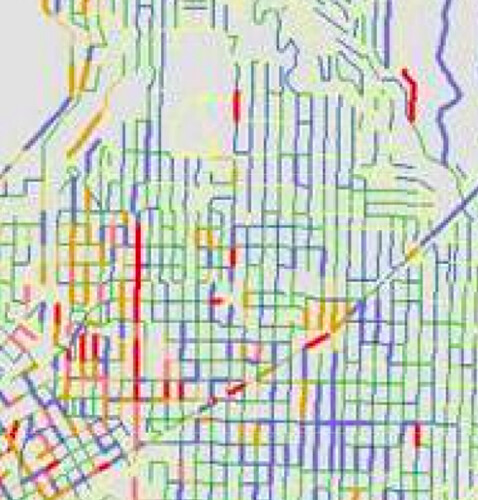
A recent report by the City Auditor’s Office shows that the vast majority of crime in Seattle occurs in just a few city blocks. The report looks at policing programs in other cities that focus on “hot spots” of criminality and recommends that Seattle pursue similar programs. And, we’ll end the suspense — Capitol Hill’s main “High Chronic” crime zone: Broadway (at least in the 14-year period researchers studied).
By studying 14 years of Seattle crime history, the report’s authors found that focusing on places instead of individuals would greatly reduce the number of policing targets:
What they found was that on average only about 1,500 of Seattle’s 30,000 street segments accounted for 50 percent of the crime each year during this 14‐year period. During the same 14‐year period about 6,108 offenders were responsible for 50 percent of the crime each year. Researcher David Weisburd concluded that, “Simply stated, the (Seattle) police would have to approach four times as many targets to identify the same level of overall crime when they focus on people as opposed to places.”
The effect is even more apparent when studying juvenile crimes. “The researchers found that just 86 street segments, or .29 percent of the nearly 30,000 total street segments in Seattle, accounted for over one‐third of all of the juvenile crimes committed over 14 years,” according to the report.
Another study cited by the City Auditor’s report looked at problem block faces throughout the city from 1989-2004. “About 12 percent of the census blocks accounted for almost half of Seattle’s social disorder,” according to the report. “And in the case of physical disorder, less than 5 percent of the census blocks accounted for almost 23 percent of physical disorder reported over twelve years.”
 On the Hill, there are few surprises. Broadway and the other commercial blocks were hot spots of police activity, as you would expect. Crime was seen as increasing (yellow blocks) where population is most dense and ever-growing. Most residential streets are low-crime (green) and stable according to the report.
On the Hill, there are few surprises. Broadway and the other commercial blocks were hot spots of police activity, as you would expect. Crime was seen as increasing (yellow blocks) where population is most dense and ever-growing. Most residential streets are low-crime (green) and stable according to the report.
All of this is well and good but we are — and assume you are too — interested in more recent trends. CHS will have our 2010 East Precinct crime trends work completed and mapped soon. Stay tuned.



As a data geek, I love these kinds of statistics, but what are some of those outlying splotches of red about? The one by Volunteer Park, that looks like near the tower, so I guess that makes sense depending on what kind of crime this graph entails, i.e. dealing, loitering, vandalism, etc. But what is that tendril of right in the upper right, off of Lake Washington Blvd?! That bit of red is in the arboretum? What is that about?
Car prowls and vandalism of cars for both spots I suspect. That strip of 15th by Volunteer park has broken car windows or side mirrors several times a month(sometimes a week.
This seems somewhat dubious to me for a number of reasons. Broadway has changed dramatically in the last three or four years, so devoting new resources there seems pretty pointless. Looking at the 911 incident map (which only goes back 48 hours but I think is still representative), you see little police activity on Broadway compared to other commercial areas.
http://webqa5.seattle.gov/mnm/incidentresponse.aspx
The study and the “hot spot” approach were both proposed in the context of addressing graffiti and litter, not “real” crimes. While focusing on hot spots might work for litter (although more trash cans in those areas seems like an obvious solution), there are maybe a dozen individuals responsible for 90% of the graffiti in this city and going after those people directly ought to have the greatest impact.
Here’s the full report:
http://www.seattle.gov/audit/docs/2011Mar29_HotSpotsWhatWork
Broadway definitely still has a “sketchy” feel to it, especially with the punks that hang out there trying to pick fights. Maybe fewer 911 calls mean people are giving up? It’s hard to say without more data.
About graffiti: Given that we can’t even keep repeat drunk drivers off the road I’m guessing there’s little chance we’d have success at arresting and detaining vandals. Would be very nice, though.
I think the smash and grabs don’t have anything to do with car prowls. Most likely public lewdness.